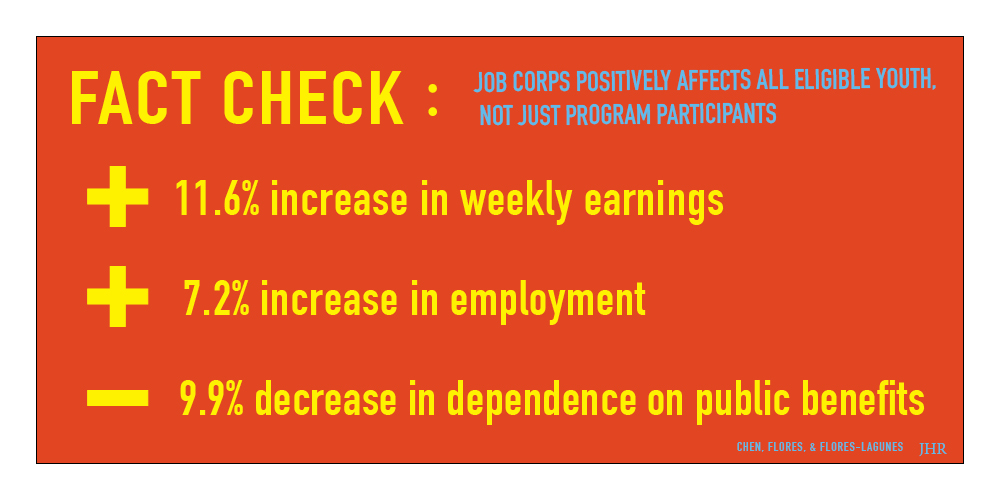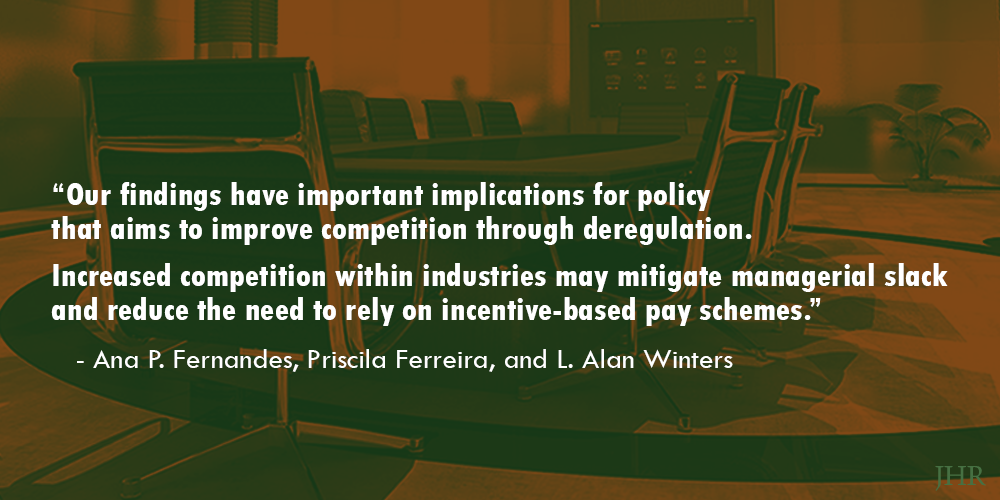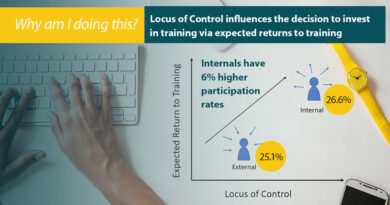Job Corps Improves Earnings, Employment, and Use of Public Benefits…Even for Eligible Nonparticipants
Government-sponsored job training programs are believed to be essential to improve the job prospects of economically disadvantaged citizens and reduce dependence on safety net programs, but do they work? Job Corps is the main federal training program in the United States targeted at disadvantaged youth ages 16 to 24. Xuan Chen (Renmin University of China), Carlos A. Flores (California Polytechnic State University at San Luis Obispo), and Alfonso Flores-Lagunes (Syracuse University) measure the effectiveness of Job Corps training and find a positive effect on three important outcomes—earnings, employment, and amount of public benefits received.
The study is randomized and divides the population of Job Corps-eligible youth into those assigned to participate in the program and those assigned to be embargoed from the program for three years. The researchers derive a new way to measure the effectiveness of Job Corps training and provide new insight on the average effects of actual participation in this program on the full population of eligible youth and on those who actually participated in the program. They assessed the effectiveness of Job Corps training for those populations on weekly earnings, employment, and the yearly amount of public benefits received four years after random assignment.
They found that the average effect of Job Corps on eligible youth is an increase of at least 11.6 percent on weekly earnings, 7.2 percent on employment, and a decrease of at least 9.9 percent on yearly dependence on public benefits. Stronger effects are found for Job Corps participants. These figures represent a lower bound of the impacts, which can be even higher. In terms of earnings, the results are consistent with previous findings that the effect of Job Corps training is comparable to the estimated returns of one additional year of schooling.
The researchers also estimate the effects of Job Corps on those who are eligible for the program but decide not to participate, which account for over one-quarter of eligible youth. They estimate that their average weekly earnings would improve by at least 5.8 percent and the probability of employment would improve by at least 4.2 percent.
The findings from the study are relevant to policy makers, first, to show the positive value of the $1.5 billion program, and to suggest that administrators work to encourage the participation of eligible youth who decide not to enroll in the program. The authors suggest making Job Corps more accessible for individuals with children (e.g., by facilitating childcare) and by disseminating more information about the benefits of Job Corps to eligible applicants.
Read the full study in the Journal of Human Resources: “Going beyond LATE: Bounding Average Treatment Effects of Job Corps Training,” by Xuan Chen, Carlos A. Flores, and Alfonso Flores-Lagunes



